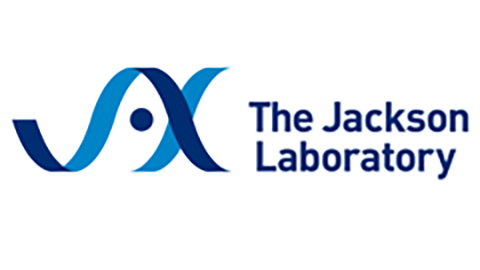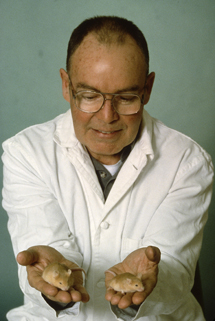Implications for the insulin signaling pathway in Snell dwarf mouse longevity: a similarity with the C. elegans longevity paradigm.
Document Type
Article
Publication Date
2002
First Page
1229
Last Page
1244
JAX Location
see Journal Collection
JAX Source
Mech Ageing Dev 2002 May; 123(9):1229-44.
Abstract
Mutation analyses in the nematode, Caenorhabditis elegans, and mice have identified genes that increase their life-span via hormonal signal transduction, i.e. the insulin/insulin-like growth factor-1 (IGF-1) pathway in nematodes, and the growth hormone (GH)-thyriod stimulating hormone (TSH)-prolactin system in Snell dwarf mouse mutants. We have shown that the GH deficiency due to Pit1 mutation in the long-lived Snell dwarf mice may decrease circulating insulin levels, thereby resulting in a decreased activity of the insulin/IGF-1 signaling pathway. The data presented are consistent with our hypothesis that the decreased circulating insulin levels resulting from the Pit1 mutation mimics a physiological state similar to that proposed to occur in the long-lived C. elegans, daf-2 mutant. Our studies demonstrate a series of changes in components of the insulin/IGF-1-signaling pathway that suggest a reduction-of-function of this pathway in the aged dwarf. These include a decreased IRS-2 pool level, a decrease in PI3K activity and its association with IRS-2 and decreased docking of p85alpha to IRS-2. Our data also suggest a preferential docking of IRS-2-p85alpha-p110alpha in the aged dwarf liver and IRS-2-p85alpha-p110beta in the aged control. We speculate that the preference for the p110alpha-containing complex may be a specific characteristic of a downstream segment of the longevity-signaling cascade. We conclude that the Pit1 mutation may result in physiological homeostasis that favors longevity, and that the Snell dwarf mutant conforms to the nematode longevity paradigm.
Recommended Citation
Hsieh CC,
DeFord JH,
Flurkey K,
Harrison DE,
Papaconstantinou J.
Implications for the insulin signaling pathway in Snell dwarf mouse longevity: a similarity with the C. elegans longevity paradigm. Mech Ageing Dev 2002 May; 123(9):1229-44.


